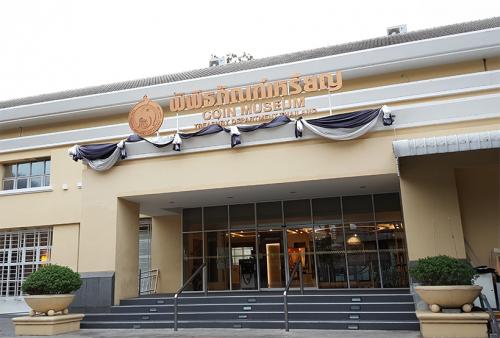
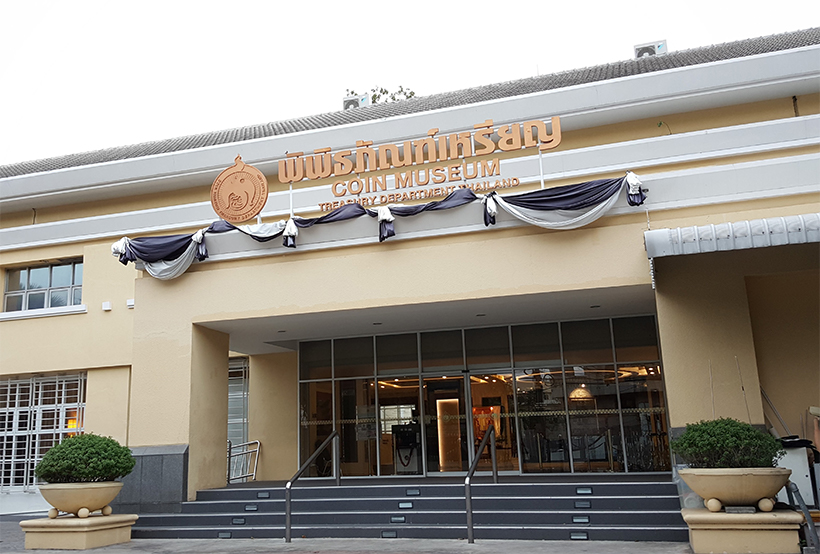
1.1 Overall policy
The principle of Universal Design was adopted since the founding of the museum. Every execution within the museum adheres to this principle. This allows the museum to not only comply with laws and regulations but also cater to visitors with different needs.
1.2 Coordinators
There are museum staffs with a specialization in Friendly Design who dutifully carry out inspections, maintenance, and improvements to make sure that the museum’s exhibitions, facilities, as well as services are readily available to all visitors.
1.3 Consultants
The museum receives consultations on Friendly Design from both in-house staffs and from outside the Treasury Department. We work closely with disabled people’s organisations, such as Thailand’s Association of the Blind, and the Educational Technology for the Blind Centre so that future improvements at the museum go in accord with the idea of Friendly Design.
1.4 Staff training
Museum staffs regularly attend various training programs. Such programs include those which are directly related to accessibility of the museum, such as sign language training, emergency medical assistance training, fire safety training. There are also others, for example, those on museum curating, which helps the museum to better accommodate visitors’ interests, and on public relations which helps the museum to reach the audience more effectively.
1.5 Inspections
Museum exhibitions, facilities, and services have been under regular inspections since when the museum was founded. As a result, the museum is always ready for visits, which is in accord with the idea of Friendly Design.
1.6 Accessibility planning
After museum facilities and activities has undergone inspections, the results are brought to attention as a part of an improvement plan. Afterwards, repairs are carried out accordingly. Museum staffs receive monthly service training. Improvements are made in museum curating. The plan includes installing audio description in the museum and audiobooks in the library. To improve the museum’s reach, the museum’s website is designed and maintained according to Friendly Design. This ensures a constant development and improvement in the direction of Friendly Design for the museum.
1.7 Public relations
The museum reaches out through various media outlets, e.g. Facebook, Instagram, brochures, newspaper, magazines, journals, direct invitations. It is made clear in every media outlet about the museum’s special attention to Friendly Design, and museum facilities with universal access such as ramps, parking space, and toilets for people with disabilities. The audience will be informed that the museum has been designed to suits the needs of all groups of visitors.
1.8 Visitors’ opinions
Visitors’ opinions are collected through questionnaires, guest books, and interviews, and will be taken into consideration for the betterment of the museum.
1.9 Maintenance and improvements
The feedbacks collected from visitors are used for the betterment of both the exhibitions, museum facilities, and staff training. Various programmes are put forward every year for the improvement of the museum, for example, updating the museum’s website with Friendly Design, adding audiobooks in the library, organising special activities for children, senior visitors as well as visitors with disabilities.
2.1 Designing physical elements of exhibitions
Designing the physical elements of the exhibition includes designing materials, spaces, blank spaces, distance, heights, acclivity, or other physical elements in order to ensure greater accessibility, sufficient space, and ease of use for visitors. Thus, it is of utmost importance to give attention to universality of physical design from the outset.
2.2 Exhibition techniques
Exhibition techniques can help visitors to achieve better learning experience in the museum. Techniques that the Coin Museum utilises include:
2.2.1 Exhibit description in Braille
In order to assist visitors who are visually impaired, the Coin Museum provides exhibition summaries and descriptions for exhibits in Braille.
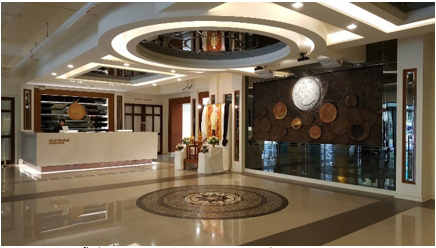
2.2.2 Touchable models
Using touchable models in exhibitions is helpful for people with visual disability. Plus, the tangible experience of the models can also contribute to better learning experience for all groups of people.

2.2.3 Magnifying glasses for exhibits
This technique aims at helping visitors who have visual difficulties, such as senior visitors, people with poor eyesight. It can also help with accessibility for exhibits that must be placed far away or those that are very small.
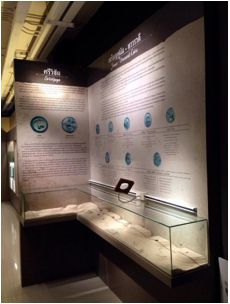
Magnifying glass for exhibits
2.2.4 Games with touchscreen function
A technique suitable for visitors with visual sensibility for example people without disabilities, children, people with hearing disabilities, people with motion disability. The facility is necessarily designed to be of a proper height for the use of people in wheelchair and children, to contain colours, sizes, and fonts that are suitable for visitors with colourblindness, senior visitors, and visitors who are visually impaired.

Touch Screen Games
2.2.5 Motion pictures
A technique suitable for visitors with visual sensibility for example people without disabilities, children, people with hearing disabilities, people with motion disability. It must be designed to have pace, clarity, and colouring that is suitable for visitors with colourblindness, senior visitors, and people with visual impairment. The facility must be installed of a height that ensures accessibility for wheelchair users as well as children.

2.2.6 3D exhibitions
A technique that offers multi-sensational experience, including touch, sound, and vision to all groups of visitors, including visitors without disabilities, children, senior visitors, and those with disabilities. Designing this type of exhibition must always make sure that there is sufficient space.
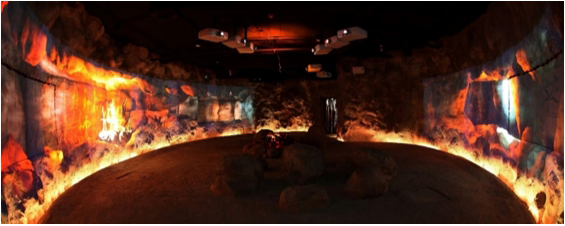
3.1 Museum facilities
3.1.1 Accessible toilets
Toilets are prepared to suit the needs of visitors with disabilities. Ramps with appropriate slope and width have been installed. The size of the room and the width of the door are designed especially to accommodate wheelchair users.
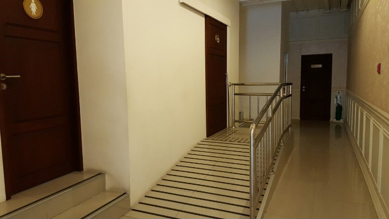
3.1.2 Ramps
Ramps with appropriate height and width have been installed at the entrance of the museum as well as exhibition rooms, ensuring accessibility for visitors in wheelchairs.
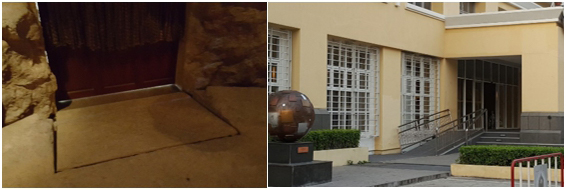
3.1.3 Reception
There is a reception point dedicated to visitors with disabilities in the reception area. The height, the width, as well as the depth of the facility are designed especially for the convenience of wheelchair users.
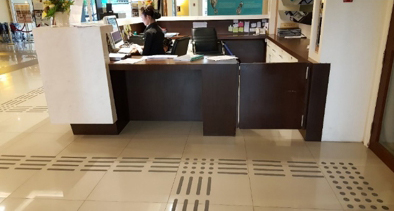
Public Relations
3.1.4 Disabled persons parking space
There is a dedicated parking space for visitors with disabilities in the front of the museum building, near the entrance and the ramp access. It has been designed to be of appropriate size, and sufficiently available. It is clearly marked, and aimed to facilitate visitors of different types of disabilities.

Disabled parking
3.1.5 Wheelchair service and first aid room
At the museum, There is a first aid room, and there are wheelchairs available for all groups of visitors in case of emergencies.
3.2. Service by Staffs
Museum staffs have received trainings with the aim to attend to different groups of visitors, including general people without special needs, children, senior visitors, and visitors with disabilities. One of the trainings is basic sign language. Moreover, it is made sure that there are always sufficient staffs in the museum for the convenience of all visitors.
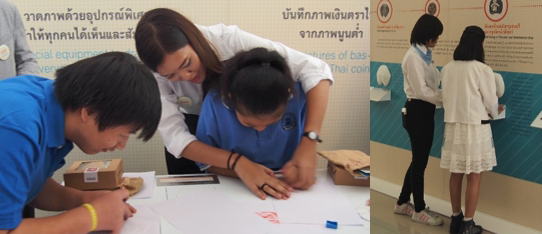
Service for the disabled
In sum, the Coin Museum’s executions according to the Friendly Design principle as described reflect the integration of Friendly Design in the museum since the beginning. As a result, the museum’s administration, exhibitions, along with our facilities and services are all in harmony, and able to respond well to every group of visitors. In 2015, the Coin Museum received an award as a venue of Friendly Design of the year. Additionally, the museum in planning for further development and improvement according to Friendly Design in order to seamlessly cater to visitors’ interests and needs. Moreover, the museum’s successful adoption of Friendly Design can be a guideline for other museums that wish to follow in this direction.
*Curator, Practitioner Level at Bureau of Grand National Treasure under the Treasury Department